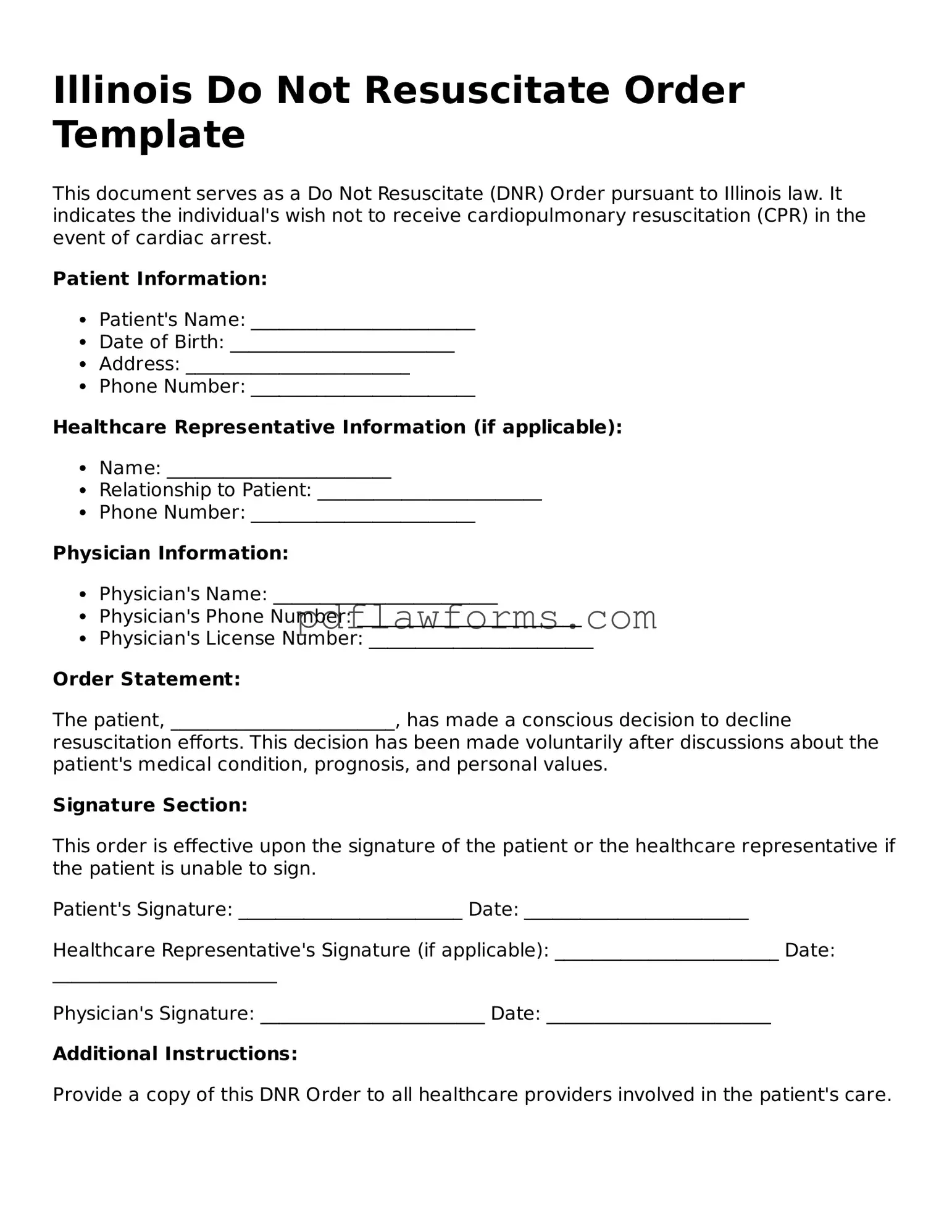Do Not Resuscitate Order Form for the State of Illinois
A Do Not Resuscitate (DNR) Order in Illinois is a legal document that allows individuals to refuse resuscitation efforts in the event of a medical emergency. This form is crucial for those who wish to ensure their end-of-life wishes are respected. To take control of your healthcare decisions, consider filling out the DNR Order form by clicking the button below.
Make My Document Online
